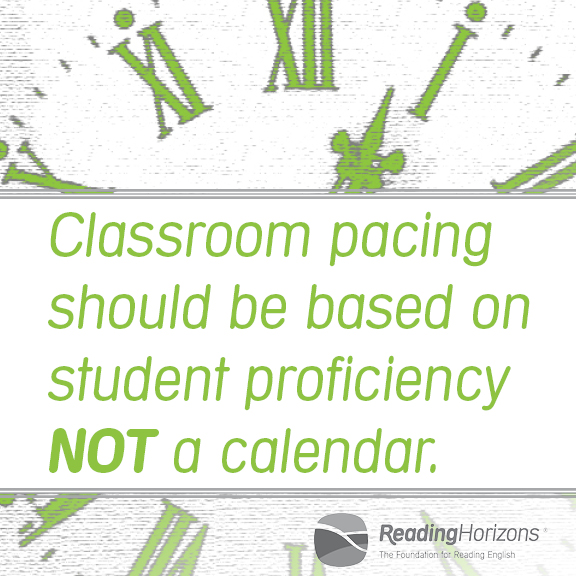What’s the Best Way to Pace Students’ Reading Instruction?
Have you ever asked someone a question or started discussing a topic and were shocked by the level of passion that comes out of the other person? You think you are asking a basic question or talking about a neutral topic but all of sudden the conversation takes a passionate twist?
When I asked our Director of Teacher Training, Shantell Berrett, to discuss student pacing… I was surprised by the level of passion that came out around the topic. I wasn’t expecting that topic to elicit such a passionate response. In fact, I thought it was one of the boring-er questions I was asking her. It ended up being the most interesting!

Seeing her passion and the stand she has developed as she has worked with teachers made me realize that the question hit on some controversy in the field of education. Where there’s smoke there’s fire. And nothing intrigues me like a good controversy.
So… even though this video was only going to be posted on our customer website (since it is primarily geared towards our program) I had to post it where every teacher could see it. Because even though Shantell is talking about Reading Horizons… her answer should be practiced in every subject and in every classroom. It’s not just a good teaching practice for using Reading Horizons… it’s a good teaching practice for everything.
Without further ado, here is what Shantell says is the best way to pace student instruction:
“The pacing of this program is based on student proficiency NOT a calendar.” – Shantell Berrett

So… how should you pace your instruction? According to the needs of your students. It makes perfect sense. I love how Shantell said: “this is both freeing and frightening for teachers…”
When you think about it, it really is bizarre that pacing ISN’T always based on student proficiency.
As Shantell explained, if we are moving too fast for students in an effort to meet benchmarks – they aren’t going to meet those benchmarks anyways… they are going to fail the test we are using to test those benchmarks.
But that doesn’t just mean slowing down to meet student proficiency. Sometimes that means speeding up. Usually when students are bored and you feel like it’s taking too long to teach a concept… you probably are. Speed up! You don’t have to go from the beginning of a lesson to the end of the lesson. Cut out additional practice if students understand a concept.
Here’s another great one-liner:
“Look for a level of mastery NOT perfection!” – Shantell Berrett
If there is a mix of students that are getting it and ready to move on with students that are struggling to understand: pull out the students that are struggling. Work with them in a small group. Not all of your students need the same amount of instruction to understand a concept. Match the proficiency level of the majority of your students with the core of your instruction and pull out or pre-teach the ones that need additional help.
Hear more of Shantell’s wisdom in her other teaching tip videos! >
Reading Horizons wants teachers to have access to the best resources. That's why we've developed the Reading Horizons Online Reading Workshop. Sign up today and watch your struggling readers succeed.
Interested in learning more about Early Literacy? Explore our FREE educational resources to learn how you can help the young readers in your life!
1 Comment

Leah Davies said
It sounds great, but can be difficult to do.